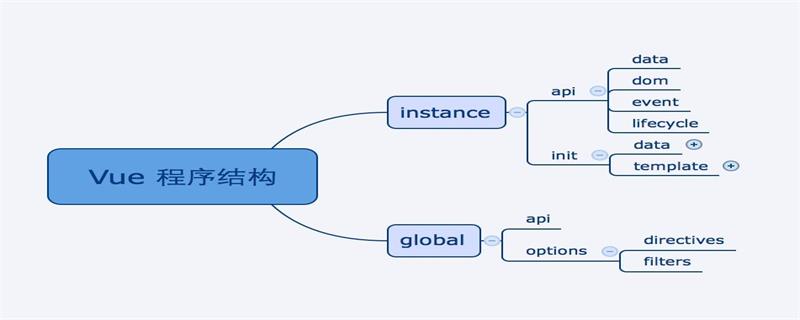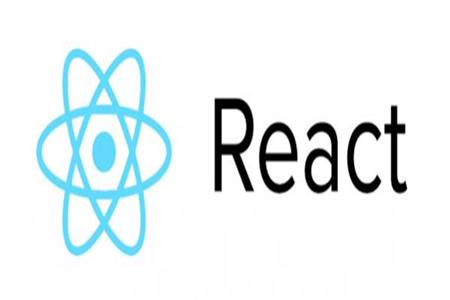What is the difference between React and Vue
The difference between React and Vue: 1. React is a complex component suitable for frequent data changes and building large-scale projects; 2. Vue is a smaller and more flexible simplistic component suitable for developing single-page programs; 3. React Native is a mature and widely used native rendering application platform and more.

As JavaScript becomes more and more popular, more and more frameworks appear. Today I will introduce to you the comparison between two popular frameworks React .js and Vue.js, I will introduce it to you in detail in the article
[Recommended course:React course 、Vue Course】

React Meaning:
React is a library for creating reusable and attractive UI components. It is well suited for components with frequently changing data. Using React, we can build reusable user interfaces by breaking them into components, its use makes building interactive UI very easy

The meaning of Vue:
Vue.js is an open source JavaScript framework capable of developing single-page applications. It can also be used as a web application framework with the aim of simplifying web development. It is popular for many reasons, one of the key reasons is its ability to re-render without any action, it allows building reusable components, is a small but powerful component and allows us to add components at any time when needed.

Comparison between React.js and Vue.js
| React | Vue | |
| Type | JavaScript Library | JavaScript Library |
| Cross-platform development | React Native is a mature and widely used native rendering application platform | Vue’s Weex is still evolving and aims to provide a smooth development experience |
| Learning curve | Steep learning curve, requires in-depth knowledge | Easy learning curve, HTML based template makes it familiar |
| Reusability | CSS Only | Maximum Reusability |
| Performance | Just as fast | Just as fast |
| Model | Virtual DOM (Document Object Model) | Virtual DOM HTML based template |
| Features | Can be used as a basis for developing single page or mobile applications | Web application framework capable of providing support for advanced single page applications |
| Complexity | Complexity | Simplicity |
| Bootstrap Application | CRA (Create React App) | Vue Inc-CLI |
| Notable Features |
One-way data binding with props Stateful components Virtual DOM Lifecycle methods JSX (JavaScript XML) Architecture beyond HTML |
HTML-based templates React Components (divide the entire application For small, independent and often reusable components) Routing Integration |
React with vue The choice
Vue is better than React when:
Latest documentation and simpler syntax,
Smaller, Faster, more flexible,
requires rich HTML templates, and is easy to develop.
React is better than Vue in the following situations:
Need to build mobile applications,
Need to build large applications,
Lightweight and easy to migrate versions.
In short, if you want a lightweight, faster, and more modern UI library to make single-page applications, you should choose Vue.js. If you want a large-scale application and mobile application, you should choose React.
Summary: The above is the entire content of this article. I hope it will be helpful to everyone's study.
The above is the detailed content of What is the difference between React and Vue. For more information, please follow other related articles on the PHP Chinese website!

Hot AI Tools

Undresser.AI Undress
AI-powered app for creating realistic nude photos

AI Clothes Remover
Online AI tool for removing clothes from photos.

Undress AI Tool
Undress images for free

Clothoff.io
AI clothes remover

Video Face Swap
Swap faces in any video effortlessly with our completely free AI face swap tool!

Hot Article

Hot Tools

Notepad++7.3.1
Easy-to-use and free code editor

SublimeText3 Chinese version
Chinese version, very easy to use

Zend Studio 13.0.1
Powerful PHP integrated development environment

Dreamweaver CS6
Visual web development tools

SublimeText3 Mac version
God-level code editing software (SublimeText3)

Hot Topics
 1664
1664
 14
14
 1423
1423
 52
52
 1318
1318
 25
25
 1268
1268
 29
29
 1248
1248
 24
24
 JavaScript Engines: Comparing Implementations
Apr 13, 2025 am 12:05 AM
JavaScript Engines: Comparing Implementations
Apr 13, 2025 am 12:05 AM
Different JavaScript engines have different effects when parsing and executing JavaScript code, because the implementation principles and optimization strategies of each engine differ. 1. Lexical analysis: convert source code into lexical unit. 2. Grammar analysis: Generate an abstract syntax tree. 3. Optimization and compilation: Generate machine code through the JIT compiler. 4. Execute: Run the machine code. V8 engine optimizes through instant compilation and hidden class, SpiderMonkey uses a type inference system, resulting in different performance performance on the same code.
 Python vs. JavaScript: The Learning Curve and Ease of Use
Apr 16, 2025 am 12:12 AM
Python vs. JavaScript: The Learning Curve and Ease of Use
Apr 16, 2025 am 12:12 AM
Python is more suitable for beginners, with a smooth learning curve and concise syntax; JavaScript is suitable for front-end development, with a steep learning curve and flexible syntax. 1. Python syntax is intuitive and suitable for data science and back-end development. 2. JavaScript is flexible and widely used in front-end and server-side programming.
 JavaScript: Exploring the Versatility of a Web Language
Apr 11, 2025 am 12:01 AM
JavaScript: Exploring the Versatility of a Web Language
Apr 11, 2025 am 12:01 AM
JavaScript is the core language of modern web development and is widely used for its diversity and flexibility. 1) Front-end development: build dynamic web pages and single-page applications through DOM operations and modern frameworks (such as React, Vue.js, Angular). 2) Server-side development: Node.js uses a non-blocking I/O model to handle high concurrency and real-time applications. 3) Mobile and desktop application development: cross-platform development is realized through ReactNative and Electron to improve development efficiency.
 How to Build a Multi-Tenant SaaS Application with Next.js (Frontend Integration)
Apr 11, 2025 am 08:22 AM
How to Build a Multi-Tenant SaaS Application with Next.js (Frontend Integration)
Apr 11, 2025 am 08:22 AM
This article demonstrates frontend integration with a backend secured by Permit, building a functional EdTech SaaS application using Next.js. The frontend fetches user permissions to control UI visibility and ensures API requests adhere to role-base
 Building a Multi-Tenant SaaS Application with Next.js (Backend Integration)
Apr 11, 2025 am 08:23 AM
Building a Multi-Tenant SaaS Application with Next.js (Backend Integration)
Apr 11, 2025 am 08:23 AM
I built a functional multi-tenant SaaS application (an EdTech app) with your everyday tech tool and you can do the same. First, what’s a multi-tenant SaaS application? Multi-tenant SaaS applications let you serve multiple customers from a sing
 From C/C to JavaScript: How It All Works
Apr 14, 2025 am 12:05 AM
From C/C to JavaScript: How It All Works
Apr 14, 2025 am 12:05 AM
The shift from C/C to JavaScript requires adapting to dynamic typing, garbage collection and asynchronous programming. 1) C/C is a statically typed language that requires manual memory management, while JavaScript is dynamically typed and garbage collection is automatically processed. 2) C/C needs to be compiled into machine code, while JavaScript is an interpreted language. 3) JavaScript introduces concepts such as closures, prototype chains and Promise, which enhances flexibility and asynchronous programming capabilities.
 JavaScript and the Web: Core Functionality and Use Cases
Apr 18, 2025 am 12:19 AM
JavaScript and the Web: Core Functionality and Use Cases
Apr 18, 2025 am 12:19 AM
The main uses of JavaScript in web development include client interaction, form verification and asynchronous communication. 1) Dynamic content update and user interaction through DOM operations; 2) Client verification is carried out before the user submits data to improve the user experience; 3) Refreshless communication with the server is achieved through AJAX technology.
 JavaScript in Action: Real-World Examples and Projects
Apr 19, 2025 am 12:13 AM
JavaScript in Action: Real-World Examples and Projects
Apr 19, 2025 am 12:13 AM
JavaScript's application in the real world includes front-end and back-end development. 1) Display front-end applications by building a TODO list application, involving DOM operations and event processing. 2) Build RESTfulAPI through Node.js and Express to demonstrate back-end applications.




